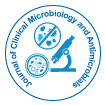

Opinion Article - (2024)Volume 8, Issue 3
Sepsis is a life-threatening condition caused by the body’s extreme response to infection. It can lead to tissue damage, organ failure and death if not promptly diagnosed and treated. One of the important components of effective sepsis management is the identification of the causative pathogen and determining its antimicrobial susceptibility. In recent years, advances in Rapid Antimicrobial Susceptibility Testing (RAST) have revolutionized sepsis diagnosis, enabling clinicians to make faster and more accurate treatment decisions. Traditional culture-based methods of testing antimicrobial susceptibility can take 24 to 48 h, which is often too slow in the context of sepsis, where every minute counts. This study analyzes the recent advances in rapid antimicrobial susceptibility testing, highlighting the impact on sepsis diagnosis and treatment.
Treatment of antimicrobial susceptibility
Sepsis results from a bacterial, viral or fungal infection that leads to a dysregulated immune response, causing widespread inflammation and damage to the body. The most common bacterial pathogens responsible for sepsis include Escherichia coli, Staphylococcus aureus, and Klebsiella pneumoniae. Given the high mortality rates associated with sepsis, especially when treatment is delayed, timely identification of the causative pathogen and its antimicrobial susceptibility is critical. Antimicrobial susceptibility testing is performed to determine which antibiotics will be effective in treating an infection. The traditional method involves growing the pathogen on agar plates, followed by exposing it to various antibiotics. The results, however, can take several days to obtain, making it difficult to provide optimal treatment for septic patients in time. The need for rapid testing methods has led to innovations that reduce turnaround times and enhance the accuracy of susceptibility results. Rapid antimicrobial susceptibility testing is especially vital for sepsis, where empiric broad-spectrum antibiotic therapy is often started immediately, but specific, targeted therapy is needed as soon as possible to improve patient outcomes and reduce the risk of resistance development.
Antimicrobial susceptibility testing methods
Several latest technologies have emerged to speed up the process of antimicrobial susceptibility testing. These methods provide results within hours, sometimes even within a few hours of identifying the pathogen, which is important for sepsis patients who need immediate and targeted therapy. Matrix-Assisted Laser Desorption/Ionization Time-of-Flight Mass Spectrometry (MALDI-TOF MS) is an advanced method for rapidly identifying microorganisms. In this technique, the bacteria are first cultured, then a small sample is shows to a laser, which ionizes the bacterial proteins. The time it takes for the ions to reach the detector is measured, generating a mass spectrum that can be used to identify the organism.
Advantages: MALDI-TOF MS can identify bacterial species with high accuracy in a matter of minutes. Once the pathogen is identified, antimicrobial susceptibility can be tested using methods like broth microdilution, allowing for rapid susceptibility profiling.
Limitations: While MALDI-TOF MS is highly effective at identifying pathogens, it does not directly provide antimicrobial susceptibility results. However, when paired with other rapid AST techniques, it can significantly reduce the overall time needed for sepsis diagnosis.
Impact of antimicrobial susceptibility testing
The clinical impact of rapid antimicrobial susceptibility testing is significant. In patients with sepsis, early identification of the causative pathogen and its susceptibility profile enables clinicians to tailor antibiotic therapy to the specific organism, rather than relying on broad-spectrum antibiotics. Rapid testing allows for timely initiation of targeted therapy, which significantly reduces mortality rates associated with sepsis. Studies have shown that early and appropriate antibiotic treatment is associated with better clinical outcomes, including reduced organ dysfunction and shorter hospital stays. By providing rapid and accurate susceptibility results, rapid testing can reduce the unnecessary use of broad-spectrum antibiotics. This helps combat the growing problem of antimicrobial resistance, as the overuse and misuse of antibiotics are major drivers of resistance. Although the initial cost of implementing rapid diagnostic technologies may be higher than traditional methods, they can lead to overall cost savings by reducing the length of hospital stays, improving patient outcomes, and reducing the use of broad-spectrum antibiotics, which are expensive and often less effective. Advances in rapid antimicrobial susceptibility testing have revolutionized the diagnosis and treatment of sepsis, offering clinicians the tools they need to make faster and more accurate decisions. Techniques like MALDI-TOF MS, PCR-based methods, automated systems, phenotypic testing, and nextgeneration sequencing have significantly reduced turnaround times for identifying pathogens and determining their susceptibility to antibiotics. These innovations not only improve patient outcomes but also help combat the rise of antimicrobial resistance. As these technologies continue to evolve, they will play an increasingly important role in the fight against sepsis and other infectious diseases. Rapid antimicrobial susceptibility testing is an essential component of modern sepsis management, and its continued advancement is important for improving patient care in the face of evolving microbial threats.
Citation: Chen M (2024). Revolutionizing Sepsis Diagnosis and the Role of Antimicrobial Susceptibility. J Clin Microbiol Antimicrob. 8: 202.
Received: 23-Aug-2024, Manuscript No. JCMA-24-35604 ; Editor assigned: 26-Aug-2024, Pre QC No. JCMA-24-35604 (PQ); Reviewed: 09-Sep-2024, QC No. JCMA-24-35604 ; Revised: 16-Sep-2024, Manuscript No. JCMA-24-35604 (R); Published: 24-Sep-2024 , DOI: 10.35248/ JCMA. 24.8.202
Copyright: © 2024 Chen M. This is an open-access article distributed under the terms of the Creative Commons Attribution License, which permits unrestricted use, distribution, and reproduction in any medium, provided the original author and source are credited.